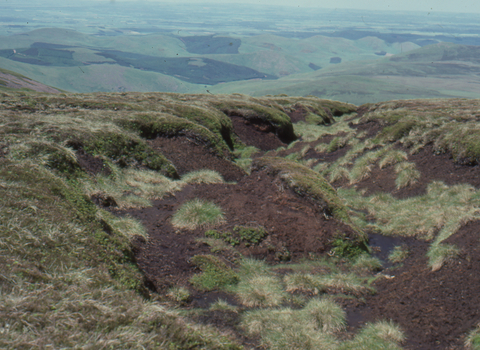What is Peat?
Peat is partially decayed vegetation that builds up in waterlogged conditions. In the uplands, with high rainfall, it is acidic and poor in nutrients and is known as bog. In the lowlands it is mainly fen peat (there us a lot in Fenland in East Anglia), which is very fertile when drained. On higher hills in the uplands, blanketing the landscape, it is known as blanket bog, and lower down, where it infills depressions, it is either raised bog (slightly domed) or is transitional to blanket bog.
While peat is also studied by ecologists it is also one of the most recent (geologically youngest) deposits mapped by geologists.
How do I recognize it?
It is a dark brown or gingery, fibrous, soft material and usually holds lots of water. It is very easily eroded so peat bogs and fens (collectively mires) are rare, delicate environments which need protection.
Where do I find it?
In Northumberland we have many areas of peat, more than almost every other English county. It is mainly in the west of the county. The Border Mires, within Kielder Forest, are internationally famous with near-natural vegetation.
How was it made?
By plants and other organic matter slowly decaying in waterlogged conditions.
What does a Peat landscape look like?
Generally they are flat or gently sloping areas with no trees, often dark-coloured with heathers. Close up, however, they can be very colourful.
Which plants like Peat?
Sphagnum moss is a main component of peat and on the wettest bogs completely covers the surface. Growing in the Sphagnum are heathers and cottongrasses, and some smaller, colourful plants such as bog asphodel, cranberry, bog rosemary and sundew. Where Sphagnum is scarce or absent, heather and hare’s-tail cottongrass dominate.
What use is it?
It was (and regrettably still is) a popular material for improving soil for growing garden plants. It was also cut out and dried and used for fuel. In Scotland, peat is used to flavour malt whisky. Today, with increasing concern about our changing climate, we realise that peat also has the capability to store a great deal of carbon and so we recognise that mires should be protected and not damaged by extraction, commercial forestry or agriculture.

